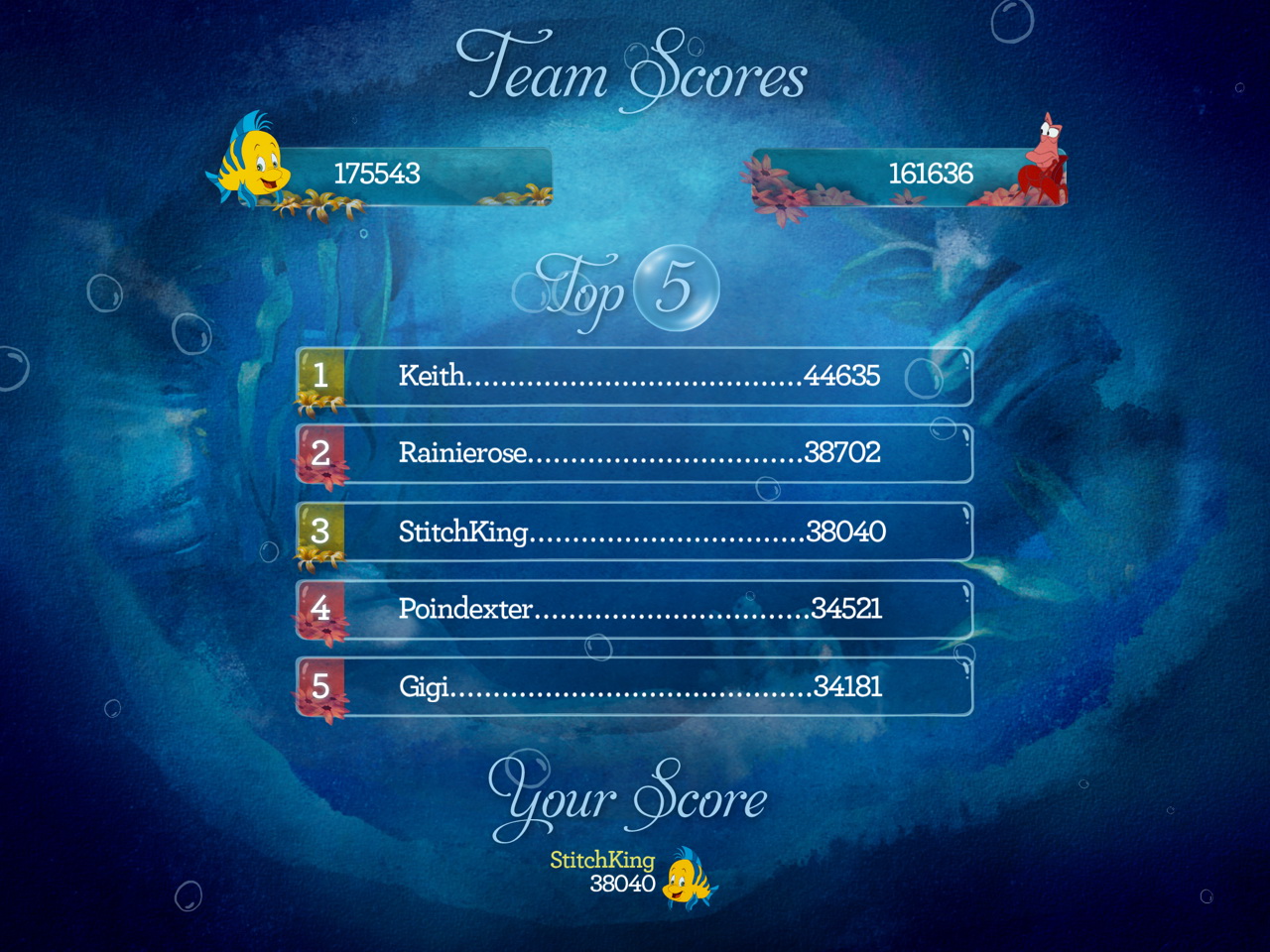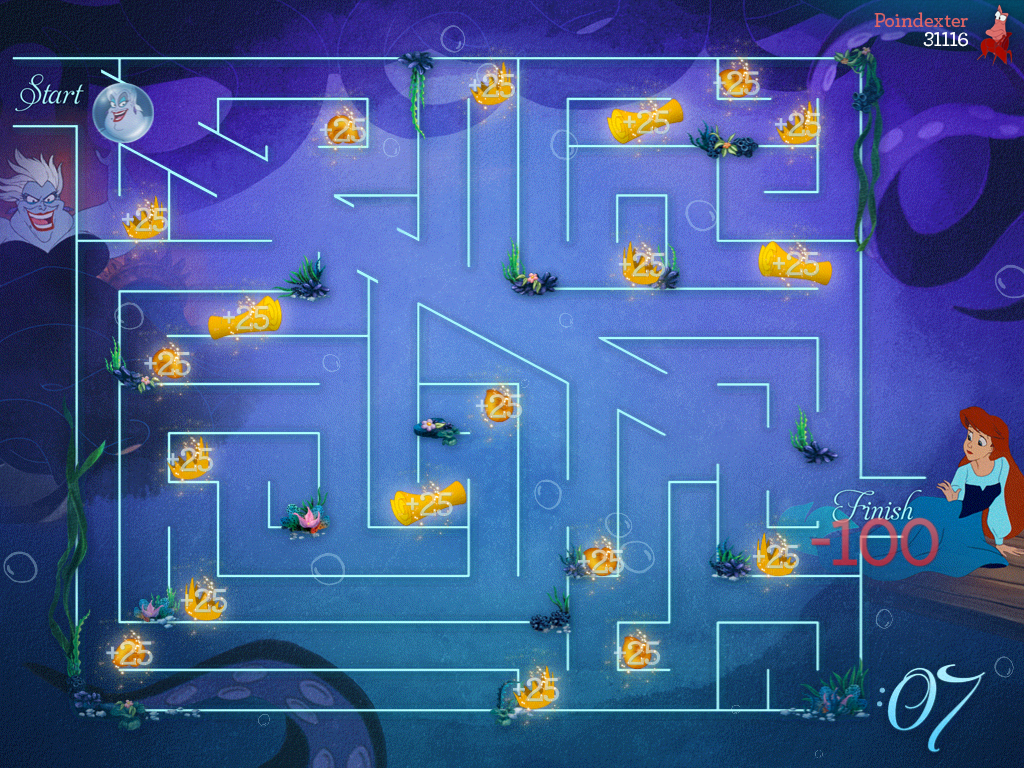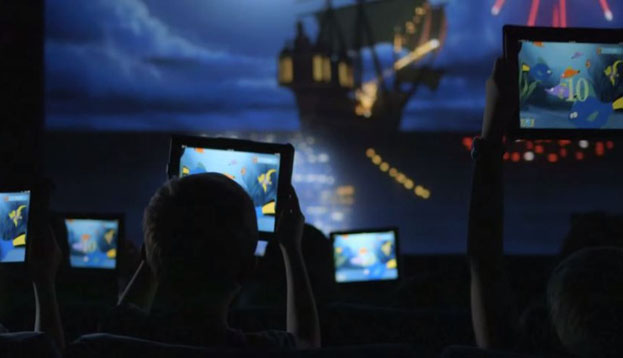Going to the movie theater usually entails being briefed on turning your cell phone off. The latest Disney experiment wants you to defy basic etiquette by bringing your iPad into the picture with a fully-synced second screen movie experience. Second Screen Live: The Little Mermaid appears to be the next natural step in the gamification of well, everything.
The special showing was brought to just 16 theaters in Southern California, New York, New Jersey, Texas, Georgia and Kansas for a month-long run which began Sept. 20. Beforehand, participants were required to download a 641 MB app compatible only with the iPad.

The app uses the iPad’s microphone to sync with the interactive elements of the movie with games that are fun and appropriate for all ages. The games begin to roll in before the credits do. The audience forms groups that compete to score the most points before the movie’s end. The games are usually titled after the character that appears on the film screen. At choice moments, the movie will pause so the audience can get a full gaming experience without distracting too much from the film.

The interactive elements aren’t just limited to games, too. The movie’s songs are given special precedence with “crab-e-ole,” which is, you guessed it- lyrics on the screen for the audience to sing along with. This element is particularly great because of its potential for adding an educational component to the experience.
Disney’s movie is just part of an industry-wide effort to bring people back to the theater in a time when the movie industry might be in trouble. The Second Screen Live experience might reinvigorate the movie experience by making it special again. Marketers are facing the challenge of making the movie-going experience attractive to the next generation. Bringing another screen into the equation feels like the natural next step, a move that is in line with our evolving love for mobile devices. For now, Disney is continuing with bringing back classics to the big screen.
The Little Mermaid experiment has been quite successful, with 97 percent of the audience of the audience being positive and receptive. Possibly due to the great response, The Nightmare Before Christmas is now slated to come to theaters this year second screen-style.
If the idea proves lucrative, it follows that bringing in the second screen might be just as engaging for adults as it is for kids. Potential for live-tweeting, quizzes and more are there. It might also be used to extend the usual theatrical run for popular films and encourage people to see a movie again, with the added second screen benefit.
While much of the audience was positive,Taylor Casti, a writer for Mashable who experienced the second screen showing firsthand had some critiques.
“Some moviegoers meeting Ariel and friends for the first time will find it hard to focus on the movie, with a new game every minute or two. Many games require an individual’s full attention, for instance, when players quickly pop bubbles or tilt the iPad to catch Ariel’s treasures in a chest.”
She noted that as a repeat-watcher of The Little Mermaid, there were some key moments that new viewers may have missed due to the distraction. Moments such as when King Triton destroys Ariel’s treasure collection and the first time Ariel meets Eric. Still, Casti observed that the addition of the second screen transformed the movie from a linear narrative to non-linear because of the emphasis on characters.
Dave Hollis, Disney’s head of theatrical distribution made a point of saying that while second screen might be effective and interactive, they are not looking to implement it with every film.
“This is absolutely not an idea that you bring any device to any movie at any time. At Disney we have extraordinary reverence for the traditional moviegoing experience to be free from light, chatter and phones,” said Hollis in speaking to the LA Times {link no longer active}.
Other critics might be those parents who try to limit the number of screens their children encounter, an effort that has been backed up by a study that says that increased screen time correlates with depression in children.
A researcher from UCLA’s Children’s Digital Media Center, Yalda Uhls, said her primary issue with second screen comes from a storytelling perspective.”It’s really important to engage children in storytelling and it’s already hard to do that today when there are so many different distractions and stimulations everywhere.”
You can see for yourself if the experience disengages you from the storyline:
Source: Mashable

